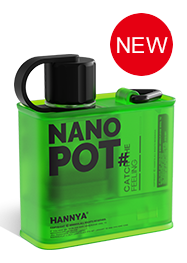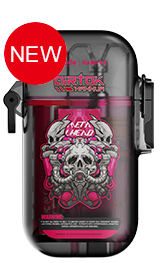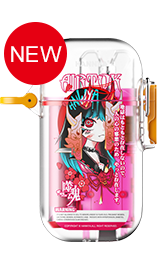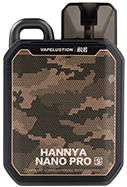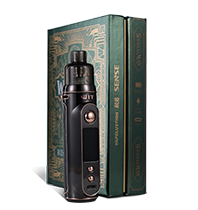
Smoke and vape – An introduction
Whether you are a vaper, a smoker, neither,or somewhere in between, at some point, you’ve probably wonderedwhat the difference between smoke and vapor actually is. Although the cloudsemitted from vaping devices (more commonly known as e-cigarettes) can looksimilar to the smoke produced by burning tobacco, that is where thesimilarities begin and end. This article will explore in detail the differencebetween the vapor produced by e-cigarettes and the smoke that results fromtraditional combusted tobacco products. So next time someone asks you about theclouds you are exhaling, you can be confident that you are giving them theright information.

Does ‘vape smoke’ exist?
The term “vape smoke” or “vaporizedsmoke” is often used by those not in the know to describe the wispy cloudsproduced by electronic cigarette devices. In truth, the term “vape smoke” issomething of an oxymoron. Something can be either vapor or smoke, but not both.This confusion is particularly problematic, as numerous studies have confirmedthat vaping is far less harmful to your health than smoking.
Conflating tobacco smoke with e-cigarettevapor perpetuates the myth that vaping is dangerous, and can lead people tomistakenly think that second-hand vapor is harmful. Once you have finishedreading this article you will be able to educate anyone who might be confusedabout the two terms.
What is vapor?
The substance that is produced by vapes isn’t actuallyvapor at all.
Technically speaking, a vapor is a gas thatis at a temperature lower than it’s “critical state”. For the non-scientists, this means that vapor can be liquified byincreasing pressure whilst maintaining the same temperature.
In the case of e-cigarettes, the cloudsproduced by heating eliquid are in fact not vapor at all, but rather anaerosol.
Ok then, what'san aerosol?
Anaerosol, unlike vapor, isn’t actually a gas, but rather a suspension of incredibly fine liquidparticles in a gas. In the case of e-cigarette “vapor” , the aerosolis a suspension of e-liquid micro-droplets in air.
I have never heard anyone using the term “aerosol” to describewhat is produced by e-cigarettes. So, despite my pedantic nature, it makessense to use the ubiquitous term “vapor.
What aboutsmoke?
Smoke is only produced by combustion(burning). It describes an amalgamation of solid and liquid particulate matteras well as gases that are produced when a material undergoes combustion afterbeing exposed to a sufficiently high temperature.
Combusting a material can have a dramaticeffect on the physical compounds that are present. Carbon is the most wellknown of the products of combustion, but burning a substance also alters thecompounds in question, and even creates entirely new, toxic chemicals that youwould do best to avoid.
It’s no secret thatsmoking tobacco is seriously bad news for your health. But you might besurprised by just how many noxious compounds are found in cigarette smoke. Inaddition to the tar and carbon monoxide that most of us are familiar with,smoke from combusted tobacco contains over 5,000 different chemicals! Oversixty of these are known carcinogens, and smoking is heavily associated withnumerous health conditions of the pulmonary, circulatory, and respiratorysystems.
Asides from lung cancer, tobacco smoke hasbeen linked to an increased risk of stroke, hypertension, heart disease.
What’s the difference between smoke and vapor?
Despite the fact that, to the human eye,smoke and vapor can appear very similar, the two substances could not be moredifferent. As outlined above, smoke is a suspension of solid microparticles andgases, whereas the “vapor” produced by e-cigarettes is a liquid aerosol suspended in air. Aswell as being a liquid, vapor is different from smoke in a number of importantways, including chemical makeup, persistence in the environment, taste, andtemperature.
The chemicaldifferences between smoke and vapor
If one examines the chemical makeup oftobacco smoke and e-cigarette vapor, the only compound that is present in bothis nicotine. Asides from nicotine, e-cigarette vapor also contains vegetableglycerin, propylene glycol, and any number of flavoring additives.
As long as you buy your e-liquid from areputable source, you can be confident that it will not contain anythingharmful to your health (except for nicotine itself, which some studies havesuggested might be carcinogenic). All flavorings used in e-liquid have to beapproved for human consumption, and most have a long history of use in addingflavor to various food products.
Smoke from combusted tobacco comprises over4000 different chemicals, many of which have been repeatedly shown to bedamaging to human health. Although vaping is a relatively new phenomenon, allof the studies conducted so far have demonstrated that it is a far saferalternative to smoking, This is because vapor contains far fewer potentiallytoxic compounds.

What givestobacco smoke its taste?
The main compounds that give tobacco smokeits distinctive flavor are known as plant polyphenols. Fresh tobacco leaves areentirely unsuitable for smoking as they produce harsh, putrid smoke that tastesbad and is deleterious to human health (even more so than regular oldcigarettes). Consuming smoke from uncured tobacco leaves is not recommended, asaside from the overwhelmingly unpleasant taste, the high levels of both ammoniaand nicotine are very harmful to health and could even be fatal! To turn thefresh green leaves plucked from the tobacco plant into something that more closelyresembles what you would expect to found inside a cigarette, the tobacco has toundergo a process known as curing. A variety of methods of curing tobaccoexist, but they all serve the same purpose, namely to reduce the amount ofchlorophyll (which gives leaves its green color), and allow for the oxidationand degradation of carotenoids in tobacco. The result of proper curing istobacco that is sweet, smooth, and aromatic.
What aboute-liquid flavor?
By contrast, e-cigarette vapor derives itsflavor from specific additives, both natural and artificial that are includedfor the express purpose of adding flavor. E-juice manufacturers are onlypermitted to include flavorings that have already been approved for humanconsumption.
A few years ago there were some concernsthat a particular flavoring used in e-liquids, called diacetyl, couldpotentially have negative implications for lung health. However, despite themedia storm that erupted around this particular compound and its potential forharm, it should be noted that cigarettes contain between 10-100 times morediacetyl than is found in any e-liquid, and no negative health reports fromthis particular substance have been reported in cigarette smokers or vapers. Itwould seem fair to say that the risks from diacetyl have likely been blown outof all reasonable proportion.
The lingeringeffects of smoke vs vapor
If you’ve ever walked intoa room where people have been smoking, you’ll certainly befamiliar with the sour, stale smell that can linger for days. Indeed, the aromaleft in houses by regular smokers can oftentimes require professional cleaningto remove entirely.
As well as the smell, tobacco smoke isnotorious for the unhealthy looking yellow stains that it leaves on surfacesand fabrics. Most people will be familiar with the staining effect that smokingcan have on teeth, but this soiling will also occur on curtains, furniture,walls, and anything else that makes repeated contact with the cocktail ofcompounds emitted in cigarette smoke. The tar found in tobacco smokeaccumulates and gives surfaces a distinctive yellow or brownish tint. Not onlyis this residue unpleasant to look at, it can be nigh on impossible to remove.
Those of us who use e-cigarettes aren’t completelysafe from the risk of residue build-up. Vegetable glycerin, one of the two mainsubstances used as the base in all e-liquids, has the potential to leave a thinfilm coating that is most visible on glass surfaces such as windows. “Vapingresidue” is particularly noticeable on car windshields, but fortunately forus, cleaning it up tends to be a far less labor-intensive task than cleaningoff cigarette smoke. Also, the smell doesn’t tend to lingernearly as long. Besides, the aroma from e-liquid vapor tends to be far more tolerablefor most people than the noxious fumes that come with smoking.
Temperaturedifferences between smoke and vapor
The end of a burning cigarette is hot.Really hot. That is probably no surprise for anybody who knows what fire is,but you might be surprised at how hot – The end of acigarette can reach temperatures in excess of 900 degrees celsius!
By contrast, e-cigarettes produce vapor ata much lower temperature – Usually not exceeding 200 degrees celsius. This profound differencein temperature means that generally speaking, vapor is far less of an irritantthan smoke. If you’ve tried smoking a cigarette after a period of abstinence you haveprobably witnessed this yourself.
It is a common trope that people who trycigarettes for the first time inevitably end up hacking up half a lung, and thehigh temperature of the smoke produced by combusting tobacco is one of thereasons for this effect.
Smoke vs vapor – Conclusions
As we’ve seen, asides fromthe visual similarity between smoke and vapor (attributable to the fact thatboth are suspensions of particles in a gas), the two substances could not bemore different. Smoke is hotter, more harmful, and hangs around for a lotlonger than even the fattest sub-ohm clouds.
Unfortunately, due to the visualsimilarities between e-cigarette vapor and cigarette smoke, as well as asustained campaign of misinformation in the media, much of the populace remainsignorant on the subject. In this day and age, those of us who enjoy using oure-cigarettes need to be able to combat the waves of misinformation that are outthere. Public perception can be hugely influential when it comes to regulationand legislation, and the last thing we need is more restrictions.
So next time someone asks you about the “vape smoke” you areinhaling, you will have all the knowledge necessary to correct them. Butremember, even though second-hand vapor is nowhere near as bad for you assecond-hand smoke, you should be mindful and empathetic to other people’s needs whenpuffing away. Avoid engulfing strangers in your second-hand clouds, especiallyindoors, and refrain from vaping anywhere that you wouldn’t expect tosee smokers. If in doubt, just ask! It’s always better tobe safe than sorry, as the penalty for vaping in forbidden areas can be prettyharsh.






